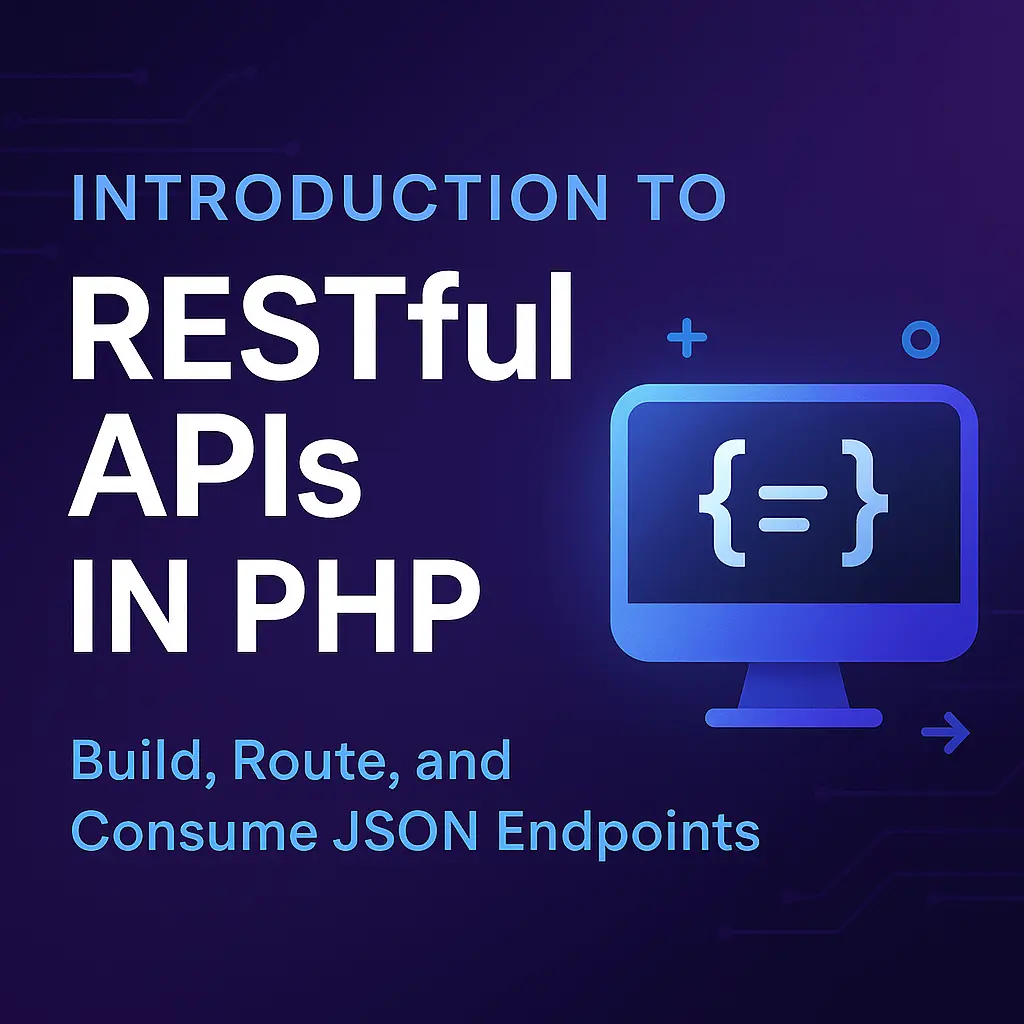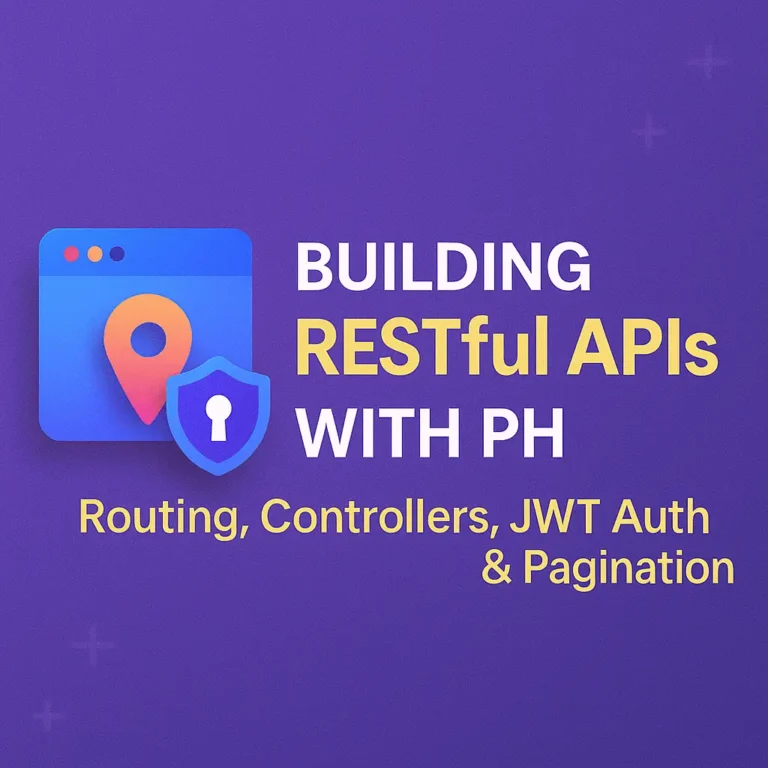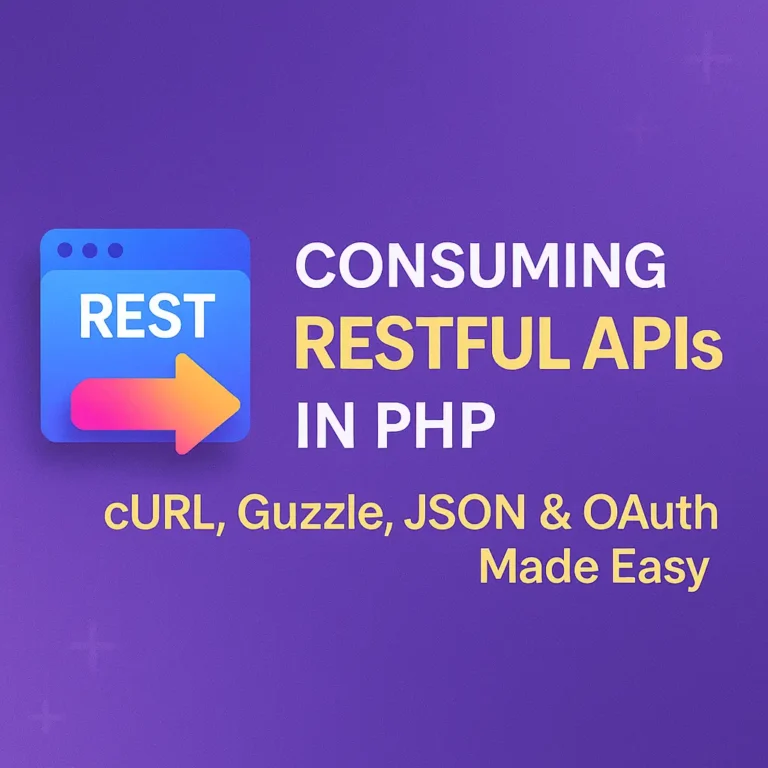Among the various types of APIs, RESTful APIs have emerged as a popular choice due to their simplicity, scalability, and flexibility. In this article, we’ll delve into the fundamentals of RESTful APIs and explore how to design and implement them using PHP.
Understanding RESTful APIs
REST (Representational State Transfer) is an architectural style for designing networked applications. RESTful APIs adhere to the principles of REST, which emphasize a stateless client-server communication model and utilize HTTP methods (GET, POST, PUT, DELETE) for data manipulation. Here are some key concepts to grasp:
Resources:
In RESTful API design, everything is treated as a resource. A resource could be a user, a product, or any other entity that your application deals with. Each resource is uniquely identified by a URI (Uniform Resource Identifier).
HTTP Methods:
RESTful APIs use standard HTTP methods to perform operations on resources:
GET: Retrieve a resource or a collection of resources.
POST: Create a new resource.
PUT: Update an existing resource.
DELETE: Delete a resource.
Statelessness:
RESTful APIs are stateless, meaning each request from a client to the server must contain all the necessary information to fulfill the request. The server doesn’t maintain any client state between requests.
Representation:
Resources are represented in various formats such as JSON (JavaScript Object Notation) or XML (eXtensible Markup Language). JSON has become the de facto standard due to its simplicity and readability.
RESTful API Design Principles
Designing a RESTful API involves adhering to certain principles to ensure consistency, simplicity, and usability. Here are some best practices to follow:
Use Nouns for Resource URIs:
URIs should represent resources, not actions. Use nouns instead of verbs in URIs. For example, /users is preferable to /getUsers.
Use HTTP Methods Appropriately:
Use HTTP methods as intended. GET for retrieving data, POST for creating resources, PUT for updating resources, and DELETE for deleting resources.
Versioning:
Include version numbers in your API URIs to ensure backward compatibility as your API evolves. For example, /api/v1/users.
Use Plural Nouns for Collections:
URIs representing collections should be plural nouns. For example, /users for a collection of users.
Filtering, Sorting, and Pagination:
Provide mechanisms for clients to filter, sort, and paginate large collections of resources. This enhances performance and improves the user experience.
Implementing a RESTful API in PHP
Below is a basic example of how you can implement a RESTful API in PHP using the Slim framework:
Now, let’s see how we can implement a simple RESTful API in PHP.
<?php
require 'vendor/autoload.php';
use Slim\Factory\AppFactory;
use Psr\Http\Message\ResponseInterface as Response;
use Psr\Http\Message\ServerRequestInterface as Request;
$app = AppFactory::create();
$app->get('/users', function (Request $request, Response $response) {
// Fetch list of users from the database
$users = array(
array('id' => 1, 'name' => 'John Doe'),
array('id' => 2, 'name' => 'Jane Smith')
);
return $response->withJson($users);
});
$app->post('/users', function (Request $request, Response $response) {
// Create a new user
$data = $request->getParsedBody();
// Code to save the user to the database
// Return response with newly created user
});
$app->put('/users/{id}', function (Request $request, Response $response, array $args) {
// Update an existing user
$id = $args['id'];
$data = $request->getParsedBody();
// Code to update the user in the database
// Return response with updated user
});
$app->delete('/users/{id}', function (Request $request, Response $response, array $args) {
// Delete an existing user
$id = $args['id'];
// Code to delete the user from the database
// Return response indicating success or failure
});
$app->run();
This code sets up a basic RESTful API with endpoints for retrieving, creating, updating, and deleting users. You can expand upon this example to build more complex APIs based on your application’s requirements.
Conclusion
RESTful APIs have become a cornerstone of modern web development, enabling seamless communication between diverse software systems. By adhering to RESTful principles and leveraging the power of PHP, developers can build robust and scalable APIs to drive their applications forward. With a solid understanding of REST fundamentals and best practices, you’re well-equipped to embark on your journey of API development in PHP.





